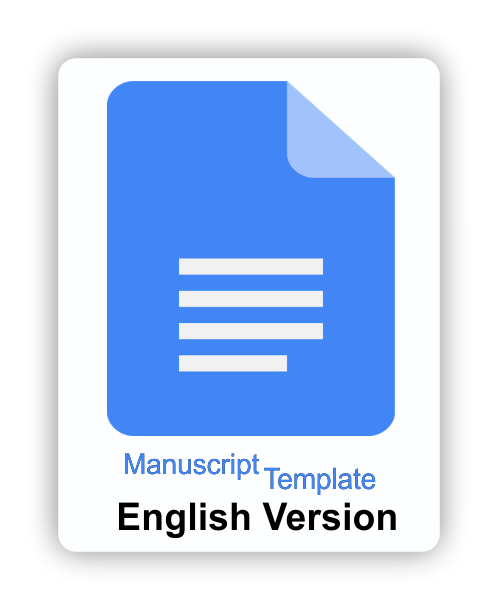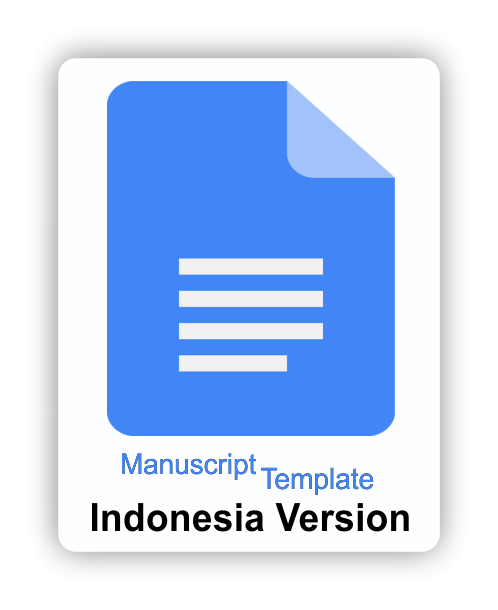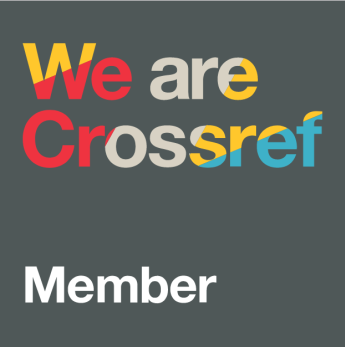Statistics learning innovation through contextual numeration of literacy e-module
Downloads
The numeracy literacy skills of Indonesian students, particularly in solving story problems and presenting statistical data, remain relatively low. However, teaching materials that effectively support numeracy literacy in mathematics are still limited. This study aims to describe the development of a numeracy literacy e-module as an alternative teaching material for statistics. Using a Research and Development approach within the ADDIE model, the study was conducted through the implementation stage due to time constraints. Participants included 30 seventh-grade students from Junior High School 2 Kuningan. Data were obtained from expert validation and student response questionnaires and analyzed descriptively using percentages. Validation results from material and media experts were 90.62%, 95.31%, and 94.12%, categorized as very valid. Student responses indicated a practicality level of 91.33%. The contextual story-based e-module effectively connects statistical concepts to real-life situations. The findings conclude that the developed e-module is highly valid and practical for classroom use. However, implementation faces challenges, including limited teacher training and inadequate digital infrastructure. Therefore, teacher training and better digital support are recommended, along with further studies to evaluate the long-term effectiveness of the e-module.
Adiastuty, N., Nurhayati, N., Ganya'il, M. K. G. (2024). Pengembangan media pembelajaran interaktif berbasis Articulate Storyline 3 untuk meningkatkan kemampuan pemecahan masalah matematis pada materi statistika. JKPM (Jurnal Kajian Pendidikan Matematika), 10(1), 143–154. http://dx.doi.org/10.30998/jkpm.v10i1.26692
Afriani, L., Mutmainnah, & Sunarni. (2025). Understanding the design of research and development methods in the field of education. IJESS International Journal of Education and Social Science, 6(1), 1–5. https://doi.org/10.56371/ijess.v6i1.333
Agnesti, Y., & Amelia, R. (2020). Penerapan pendekatan kontekstual dalam menyelesaikan soal cerita pada materi perbandingan dan skala terhadap siswa SMP. Mosharafa: Jurnal Pendidikan Matematika, 9(2), 347–358. https://doi.org/10.31980/mosharafa.v9i2.748
Alifiya, S. B., & Sabandar, J. (2023). Pengembangan bahan ajar menggunakan pendekatan kontekstual berbantuan Liveworksheet pada materi statistika. JPMI (Jurnal Pembelajaran Matematika Inovatif), 6(4), 1561–1572. https://doi.org/10.22460/jpmi.v6i4.18332
Azubuike, O. B., Browne, W. J., & Leckie, G. (2024). State and wealth inequalities in foundational literacy and numeracy skills of secondary school-aged children in Nigeria: A multilevel analysis. International Journal of Educational Development, 110, 1-13. https://doi.org/10.1016/j.ijedudev.2024.103112
Bozkurt, A., Karadeniz, A., Baneres, D., Guerrero-Roldan, A. E., & Rodriguez, M. E. (2021). Artificial intelligence and reflections from educational landscape: A review of AI studies in half a century. Sustainability, 13(2), 1–16. https://doi.org/10.3390/su13020800
Deda, Y. N., Disnawati, H., & Daniel, O. (2023). How important of students’ literacy and numeracy skills in facing 21st-century challenges: A systematic literature review. Indonesian Journal of Educational Research and Review, 6(3), 563–572. https://doi.org/10.23887/ijerr.v6i3.62206
Demirkan, Ö. (2019). Pre-service teachers’ views about digital teaching materials. Educational Policy Analysis and Strategic Research, 14(1), 40–60. https://doi.org/10.29329/epasr.2019.186.3
Dogan, M. E., Dogan, T. G., & Bozkurt, A. (2023). The use of artificial intelligence (AI) in online learning and distance education processes: A systematic review of empirical studies. Applied Sciences, 13(5), 1-12. https://doi.org/10.3390/app13053056
Engelbrecht, J., & Borba, M. C. (2024). Recent developments in using digital technology in mathematics education. ZDM–Mathematics Education, 56, 281–292. https://doi.org/10.1007/s11858-023-01530-2
Fauziyyah, R. F., Rohaeti, E. E., & Amelia, R. (2024). Learning obstacle pada materi statistika. Jurnal Pembelajaran Matematika Inovatif (JPMI), 7(4), 323–335. https://doi.org/10.22460/jpmi.v7i4.23697
Firmansyah, R. S., & Rusimamto, P. W. (2020). Validitas dan kepraktisan modul pembelajaran human machine interface pada mata pelajaran instalasi motor listrik di SMK Negeri 3 Jombang. Jurnal Pendidikan Teknik Elektro, 9(2), 395–403. https://doi.org/10.26740/jpte.v9n2.p%25p
Fristadi, R., & Bharata, H. (2015). Meningkatkan kemampuan berpikir kritis siswa dengan problem based learning. Seminar Nasional Matematika dan Pendidikan Matematika UNY 2015, 597–602. https://www.academia.edu/33842844/SEMINAR_NASIONAL_MATEMATIKA_DAN_PENDIDIKAN_MATEMATIKA_UNY_201
5_Meningkatkan_Kemampuan_Berpikir_Kritis_Siswa_Dengan_Problem_Based_Learning
Hasibuan, R. H., Awaliyah, R., & Nurhasanah, N. (2023). Pendampingan komunitas guru PAUD dalam merancang capaian pembelajaran berbasis muatan literasi dan STEAM. Jurnal Inovasi Penelitian dan Pengabdian Masyarakat, 3(2), 80–90. https://doi.org/10.53621/jippmas.v3i2.270
Hidayat, F., & Nizar, M. (2021). Model ADDIE (analysis, design, development, implementation and evaluation) dalam pembelajaran pendidikan agama Islam. Jurnal Inovasi Pendidikan Agama Islam (JIPAI), 1(1), 28–38. https://doi.org/10.15575/jipai.v1i1.11042
Hidayati, A., Armiati, & Djamaan, E. Z. (2025). Analisis kemampuan komunikasi matematis peserta didik pada soal cerita statistika. Nabla Dewantara: Jurnal Pendidikan Matematika, 10(1), 15–23. https://ejournal.unitaspalembang.ac.id/index.php/nabla/article/view/414
Hidayanthi, R., Siregar, N. H, Siregar, D. A., & Siregar, H. L. (2024). Implementation of STEAM-based digital learning for students’ numeracy literacy in elementary schools. Research and Development in Education (RaDEn), 4(1), 653–661. https://doi.org/10.22219/raden.v4i1.32663
Ismanto, I. (2022). Pengembangan modul digital interaktif berbasis pengalaman siswa untuk menguatkan pembelajaran numerasi SMP dalam mendukung merdeka belajar. Postulat: Jurnal Inovasi Pendidikan Matematika, 3(1), 61-76. https://doi.org/10.30587/postulat.v3i1.4299
Jamaan, E. Z., & Yerizon, Y. (2023). Enhancing teacher creativity in digitalizing math-literacy modules through technological pedagogical content knowledge training. Al-Jabar: Jurnal Pendidikan Matematika, 14(1), 141–151. https://doi.org/10.24042/ajpm.v14i1.16832
Kaize, B. R., Rediani, N. N., & Ginting, S. B. (2024). Optimizing students’ critical thinking and numeracy literacy skills through task-based learning: An experimental study. Indonesian Journal of Educational Development (IJED), 5(2), 183–193. https://doi.org/10.59672/ijed.v5i2.4049
Kementerian Pendidikan, Kebudayaan, Riset, dan Teknologi (Kemendikbudristek), Pusat Asesmen Pendidikan. (2021). Dokumen rekomendasi kebijakan hasil asesmen nasional tahun 2021. Pusmendik Kemendikbudristek.
Khazanchi, R., Mitri, D. D., & Drachsler, H. (2025). The effect of AIbased systems on mathematics achievement in rural context: A quantitative study. Journal of Computer Assisted Learning, 41(1), 1-17. https://doi.org/10.1111/jcal.13098
Kurniawan, A. P., Budiarto, M. T., & Ekawati, R. (2022). Pengembangan soal numerasi berbasis konteks nilai budaya Primbon Jawa. JRPM (Jurnal Review Pembelajaran Matematika), 7(1), 20–34. https://doi.org/10.15642/jrpm.2022.7.1.20-34
Kusna, E., Dewi, A., Sukmo Wardhono, W., & Suharsono, A. (2023). Pengembangan media pembelajaran e-modul untuk materi proxy server menggunakan metode ADDIE (studi kasus: Kelas XI Jurusan TKJ SMK Negeri 7 Malang). Jurnal Pengembangan Teknologi Informasi dan Ilmu Komputer, 7(5), 2489–2499. https://j-ptiik.ub.ac.id/index.php/j-
ptiik/article/view/12729
Leon, C., Lipuma, J., Oviedo-torres, X., & Pastiu, C. A. (2025). Artificial intelligence in STEM education: A transdisciplinary framework for engagement and innovation. Frontiers, 10, 1–18. https://doi.org/10.3389/feduc.2025.161988
Maruyama, T., & Igei, K. (2024). Community-wide support for primary students to improve foundational literacy and numeracy: Empirical evidence from Madagascar. Economic Development and Cultural Change, 72(4), 1963–1992. https://doi.org/10.1086/726178
Nouraey, P., & Al-Badi, A. (2023). Challenges and problems of e-learning: A conceptual framework. Electronic Journal of E-learning, 21(3), 188–199. https://doi.org/10.34190/ejel.21.3.2677
OECD. (2023). PISA 2022 results (volume I): The state of learning and equity in education (PISA). OECD Publishing. https://doi.org/10.1787/53f23881-en
Rahmaini, N., & Chandra, S. O. (2024). Pentingnya berpikir kritis dalam pembelajaran matematika. Griya Journal of Mathematics Education and Application, 4(1), 1–8. https://doi.org/10.29303/griya.v4i1.420
Rochsun, R., & Agustin, R. D. (2020). The development of e-module mathematics based on contextual problems. European Journal of Education Studies, 7(10), 400–412. https://doi.org/10.46827/ejes.v7i10.3317
Rosjanuardi, R., & Juandi, D. (2023). Kemampuan berpikir kritis dalam pemecahan masalah matematika: Systematic literatur review. JPMI: Jurnal Pembelajaran Matematika Inovatif, 6(4), 1421–1431. https://doi.org/10.22460/jpmi.v6i4.17933
Saa, S. (2024). Merdeka curriculum: Adaptation of Indonesian education policy in the digital era and global challenges. Revista De Gestão-RGSA, 18(3), 1-24. https://doi.org/10.24857/rgsa.v18n3-168
Saputra, H. (2020). Kemampuan berfikir kritis matematis. Perpustakaan IAI Agus Salim Metro Lampung, pp. 1–7. file:///D:/KemampuanBerpikirKritis.pdf
Shabrina, A., Rasiman, Buchori, A., & Riyanti, A. (2023). Analisis kemampuan komunikasi matematis siswa SMA pada materi statistika kelas X. Jurnal MathEdu (Mathematic Education Journal, 6(2), 144-149. https://doi.org/10.37081/mathedu.v6i2.5196
Safitri, S. Y., Supriyono, & Astuti, E. P. (2023). E-modul matematika berbasis kontekstual untuk mengembangkan kemampuan numerasi siswa SMP. GAMMATH: Jurnal Ilmiah Program Studi Pendidikan Matematika, 8(1), 47–54. https://doi.org/10.32528/gammath.v8i1.275
Spatioti, A. G., Kazanidis, I., & Pange, J. (2022). A comparative study of the ADDIE instructional design model in distance education. Information (Switzerland), 13(9), 1–20. https://doi.org/10.3390/info13090402
Strielkowski, W., Grebennikova, V., Lisovskiy, A., Rakhimova, G., & Vasileva, T. (2025). AI-driven adaptive learning for sustainable educational transformation. Sustainable Development, 33(2), 1921–1947. https://doi.org/10.1002/sd.3221
Sugihartini, N., & Jayanta, N. L. (2017). Pengembangan e-modul mata kuliah strategi pembelajaran. Jurnal Pendidikan Teknologi dan Kejuruan, 14(2), 221–230. https://doi.org/10.23887/jptk-undiksha.v14i2.11830
Sumarni, S., Adiastuty, N., Riyadi, M., Nisa, D. K., Restu, A. M., & Lestari, I. T. (2023). Analisis kemampuan literasi matematika siswa SMP dalam mengerjakan soal pisa uncertainty and data content. AKSIOMA: Jurnal Program Studi Pendidikan Matematika, 12(1), 725-738. https://doi.org/10.24127/ajpm.v12i1.6426
Suratman, B. M., & Pranata, K. (2024). Pengembangan media Ular tangga bagi kali ( BALI ) pada pembelajaran matematika materi perkalian dan pembagian kelas II sekolah dasar. DIDAKTKA: Jurnal Kependidikan, 13(4), 5185–5194. https://doi.org/10.58230/27454312.1085
Taram, A., Sukestiyarno, Y. L., Rochmad, & Junaedi, I. (2019). Mentoring model based on the levelling of probabilistic thinking to develop problem solving ability. Journal of Physics: Conference Series, 1321(3), 1-6. https://doi.org/10.1088/1742-6596/1321/3/032101
Taufik, A., & Adiastuty, N. (2024). The design and development of differentiated mathematics teaching modules based on multiple intelligence. Jurnal Pendidikan Matematika (JPM), 10(1), 59–64. https://doi.org/10.33474/jpm.v10i1.20799
Vhalery, R., Setyastanto, A. M., & Leksono, A. W. (2022). Kurikulum merdeka belajar kampus merdeka: Sebuah kajian literatur. Research and Development Journal of Education, 8(1), 185-201. https://doi.org/10.30998/rdje.v8i1.11718
Wei, J. J., Lin, H. H., & Chen, S. L. (2023). Design of teaching aids in STEAM education and fuzzy hierarchical analysis of their educational effect. Eurasia Journal of Mathematics, Science and Technology Education, 19(11), 1-9. https://doi.org/10.29333/ejmste/13749
Widyastuti, E., & Susiana. (2019). Using the ADDIE model to develop learning material for actuarial mathematics. Journal of Physics: Conference Series, 1188, 1-8. https://doi.org/10.1088/1742-6596/1188/1/012052
Yuliani, A., & Chotimah, S. (2023). Menganalisis kemampuan pemecahan masalah matematis pada siswa Kelas IX SMPN 3 Cimahi dalam menyelesaikan soal statistika. Jurnal Pembelajaran Matematika Inovatif, 6(4), 1323–1334. https://doi.org/10.22460/jpmi.v6i4.17784
Zahran, D., Maya, R., & Zanthy, L. S. (2024). Efektivitas pendekatan saintifik dalam meningkatkan kemampuan berpikir kritis matematis siswa kelas 8 pada materi persamaan garis lurus. Jurnal Pembelajaran Matematika Inovatif (JPMI), 7(2), 397–406. https://doi.org/10.22460/jpmi.v7i2.17272
Zawacki-Richter, O., Marín, V. I., Bond, M., & Gouverneur, F (2019). Systematic review of research on artificial intelligence applications in higher education–where are the educators? International Journal of Educational Technology in Higher Education, 16(39), 1-27. https://doi.org/10.1186/s41239-019-0171-0
Zhang, D., Wijaya, T. T., Wang, Y., Su, M., Li, X., & Damayanti, N. W. (2025). Exploring the relationship between AI literacy, AI trust, AI dependency, and 21st century skills in preservice mathematics teachers. Scientific Reports, 15,1–15. https://doi.org/10.1038/s41598-025-99127-0
Copyright (c) 2025 Nuranita Adiastuti, Zahra Khairun Nisa, Rena Sageta

This work is licensed under a Creative Commons Attribution-ShareAlike 4.0 International License.
The journal allows the author(s) to hold the copyright without restrictions. Finally, the journal allows the author(s) to retain publishing rights without restrictions
 | Jurnal Inovasi Teknologi Pendidikan by http://journal.uny.ac.id/index.php/jitp is licensed under a Creative Commons Attribution-ShareAlike 4.0 International License. |























